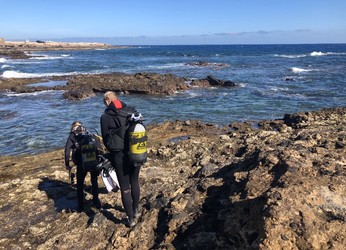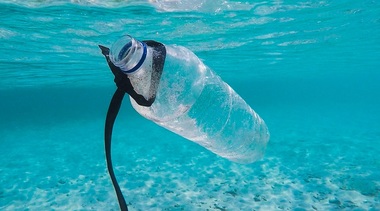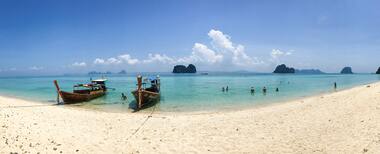With an average of 320 days of sunshine a year, a hugely diverse landscape, and vast beaches, it is very easy to see why four million sun-seeking tourists visit Gran Canaria each year. With this Canary Island becoming increasingly popular, more and more scuba divers are choosing to dive in Gran Canaria and partake in some world-class diving in Europe.
But what is diving in Gran Canaria actually like? Here is what to expect when you take the plunge in one of the Canary Islands most popular islands, Gran Canaria.
What water temperature can I expect when scuba diving in Gran Canaria?
Gran Canaria is located next to the African coast. As a result, this guarantees weather conditions that are conducive for scuba diving all year round with warm subtropical waters! In fact, many scuba divers are surprised at just how warm the water is for a diving destination within Europe. The water of Gran Canaria is regulated by the gulf stream. The gulf stream is an ocean current
that brings warm water from the Gulf of Mexico into the Atlantic ocean. Because of the gulf stream the water is regulated and kept at a comfortable 17 degrees in the Winter and peaks at an average of 24 degrees in the Summer.
What is the month where divers will experience the warmest water temperature?
Scuba divers will experience the warmest water temperature in the months of September and October.
What is the month where divers will experience the coolest water temperature?
Scuba divers will experience the coolest water temperature in March.
What visibility can I expect when scuba diving in Gran Canaria?
Gran Canaria’s calm water conditions produce excellent water clarity all year round, with the visibility regularly exceeding 20 meters even in the winter months! The rocky bottom compositions of dive sites, combined with stable water conditions ensure that the visibility rarely drops below 15 meters.
What marine life can I expect to see when scuba diving in Gran Canaria?
Gran Canaria has long been recognised as an underwater haven for marine biodiversity. Marine species in Gran Canaria include a variety of Mediterranean , Caribbean, African, and Atlantic species. It is said that Gran Canaria is home to over four-hundred marine species, with divers
being able to spot Sting Rays, Groupers, and Octopus on nearly every dive!
What is the most famous marine species in Gran Canaria?
One of the most world-renowned species residing in the waters of Gran Canaria includes the Angel Shark. The Angel Shark is a large bottom-dwelling species of shark that inhabit tropical and temperate waters. Depending on the season you are able to spot Angel Sharks when diving from every dive
site on Gran Canaria!
What is the best time of year to dive with Angel Sharks?
The Angel Shark season is between the months of December to April. If you want to observe Angel Sharks when diving in Gran Canaria you should book your diving vacation for this time period to give you the best chance of spotting this elusive species of Shark.
Are there any dangerous marine species in Gran Canaria?
Gran Canaria is notoriously a very safe location to dive, however Gran Canaria is home to some bottom dwelling species that can cause a little bit of a sting! Sea Urchins and Scorpionfish pose the most risk to divers, however, your local PADI guide will inform you about this and how to avoid them before entering the water. As with all scuba diving, you should adhere to local safety protocols and respect the underwater environment.
What makes diving in Gran Canaria so special?
Gran Canaria was created by a volcanic eruption, as a result of this one of the highlights when diving in Gran Canaria include the stunning volcanic rock formations. When diving in Gran Canaria you will be able to explore countless caverns, caves, and arches.
What type of scuba diving equipment do I need when diving in Gran Canaria?
If you are planning to bring your own scuba diving equipment, but you are unsure if your
equipment is suitable, here are a few tips!
Wetsuit:
- In the summer months, divers make use of a 5mm wetsuit
- In the winter months, divers make use of a 7mm wetsuit
- Boots and fins:
- Dive centers use hard-soled diving boots.
- Because of the use of boots, when diving in Gran Canaria you will need open-heel fins.
- Dive light: We recommend bringing along your dive light as this will allow you to spot the marine species hiding in the impressive volcanic rock formations.
What is the most famous dive site on Gran Canaria?
The most renowned dive site on Gran Canaria, is El Cabron, the marine reserve. El Cabron was voted one of the top ten dive sites in Europe and really epitomises what diving in Gran Canaria is like. El Cabron is home to over four-hundred different species of Flora and Fauna and was declared
a site of special scientific interest in 2001. El Cabron is one of only three marine reserves in the Canary Islands, and is a dive site you do not want to miss! There are a number of different routes and entry points in El Cabron, each offering something different and accommodating to a different level of experience and certification level.
Diving conditions in El Carbon:
- Visibility in Summer: 30 + meters
- Visibility in Winter: 15-20 meters
- Water temperature: The average water temperature is 21 degrees
- Bottom composition: Primarily volcanic rock, caves, caverns, and arches.
- Marine life: Angel Sharks, large Stingrays, Octopus, Barracuda, and Moray eels
Do I need a medical certificate when diving in Gran Canaria?
Yes. It is Spanish law that all scuba divers have a valid and up-to-date medical certificate that is no older than two years! Furthermore, all certified divers must have their own scuba diving insurance. But don't let this put you off! The medical certificate is very easy to gain with most medical centers on Gran Canaria offering the certificate for a small fee of 25 euros. Remember
safety comes first!
Gran Canaria is only 840 miles away from Europe, and is easily reachable by affordable direct flights. This combined with endless sunshine and superb diving conditions ensure that if you are looking to experience some premium scuba diving, then Gran Canaria should be your next scuba diving vacation.
About the author:
Sophie Keningale is a PADI scuba diving instructor in Gran Canaria with
Leagues Ahead Diving. She works hard to promote ocean conservation through her dive center and shares her passion for scuba diving with her students. Sophie owns and operates Leagues Ahead Diving with her
partner James and the center has been open since 2017.


